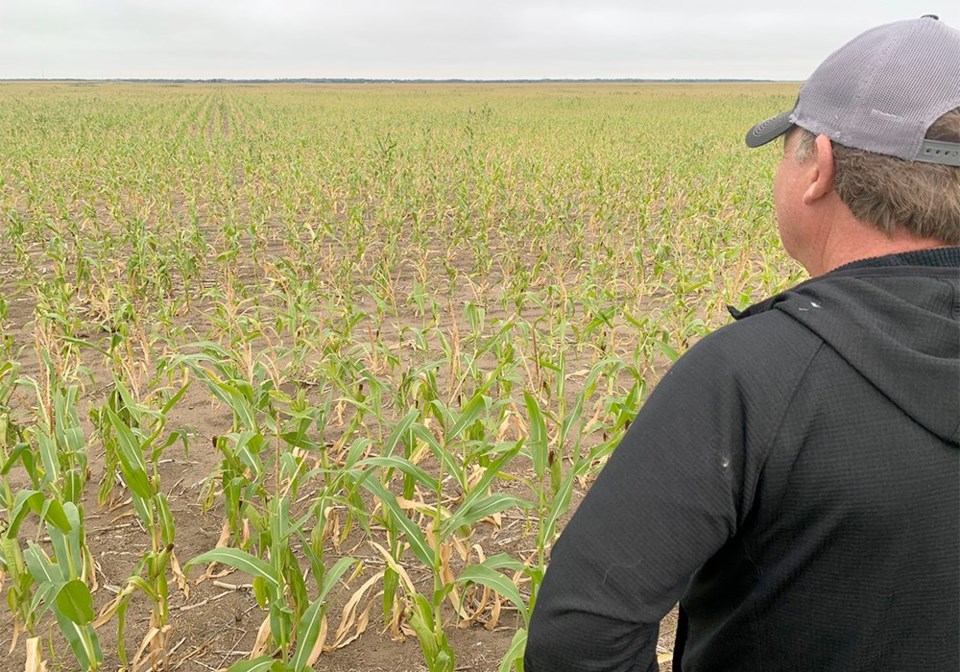As I toured southwestern Manitoba last week I saw lots of ground truth on the fields that, like so much of Western Canada, have suffered drought throughout the season.
Different crops and different pastures showed much different results in plant growth. Only the farmers who seeded or grazed them could tell you what combination of preparation, seed, seeding, grazing and management, combined with rain received, has produced these varying results. But for most farmers, this year’s drought has provided an on-field laboratory to test the results of management and weather.
That sort of a real-world laboratory is occurring for thousands of farmers this year. Many things beyond the field will be tested and we might get a glimpse of how well some of our systems are working, such as:
Safety net suite
There hasn’t been a prairie-wide, deep drought like this for years. There hasn’t been a massive disaster like this for years.
Safety net programs have changed.
That means we don’t really know how well today’s suite of safety net programs will work for farmers in the current crisis.
The coming year will give us an unwanted opportunity to test the system in the real world. With any luck, the system will work as well as government officials say that it should.
Long-term viability of the cow-calf sector
A lot of crop farmers will be able to limp through poor crop results this year due to high prices today for whatever they can harvest, and likely a good financial position from last year’s prices. (Poor crops last year and bad contract prices would negate the latter, of course.)
Most cow-calf farmers don’t have that situation. Returns haven’t been great and many producers have been limping along, hoping for better. This year not only hits cattle producers harder than crop growers, as pastures and haylands dry up and force many cattle producers to sell some of their herds, it also hits a body of farmers who don’t have the best financial positions.
Cow-calf production in places like Manitoba has suffered for years. With some of the most severe drought hitting those areas, how much of the sector will hang on, and how much will check out? We’ll see soon.
Farmers’ financial positions
Grain growers have had years of mediocre returns. This year’s crop disaster is an aberration for most.
Farmers with enough crop at today’s prices to bring in an OK income should be fine, if they were fine going into it, but if they can’t bring in enough crop or get the high prices, we could see some precarious financial engineering revealed.
These kinds of income squeezes can reveal debt icebergs mostly concealed during normal times.
Contracting
Lots of farmers this year are caught out on reasonable contracts they took out for portions of their crops they will be unable to harvest from their fields.
There are many horror stories about farmers caught in horrific positions, being forced to buy their way out of contracts at sky-high prices.
Does there need to be better buy-out and shortfall provisions written into contracts? Do farmers need more regulatory protection?
Farmers definitely aren’t in a position to dictate the terms of contracts to grain buyers, but they also don’t need to sign contracts.
It’s clearly a situation, however, in which farmers have virtually no power other than to withhold signing most contracts.
Risk management professionals and advisers generally recommend locking in some prices for a portion of an upcoming crop, so this year’s nightmarish bad crop could end up killing farmer willingness to contract.
That wouldn’t be good for anybody in the long term, but perhaps better contracts that cover the farmer for exceptional losses could keep farmers willing to contract. Without significant contracting, farmers have poorer risk management options, companies have trouble making sales, and the whole grain industry becomes much less stable.
Stability of the agriculture industry
A set of giant industries is built atop the crops and livestock that come off of farms. How stable are those industries? If the cow herd shrinks significantly, how does that affect the feedlot, packing and processing industries?
What happens to the canola crushers? Where does it leave the exporters?
What happens to the economy of hundreds of prairie communities that rely on farmers spending money?
We’ll see that in the coming year.
This drought has been a shock, but its impact will be long term for many farmers. Once the fizzing and bubbling of this unwanted experiment on western Canadian agriculture has ended, the laboratory might reveal surprising or alarming results.
The fallout of the drought is, for now, impossible to know, but the effects will set the table for the next few years.

